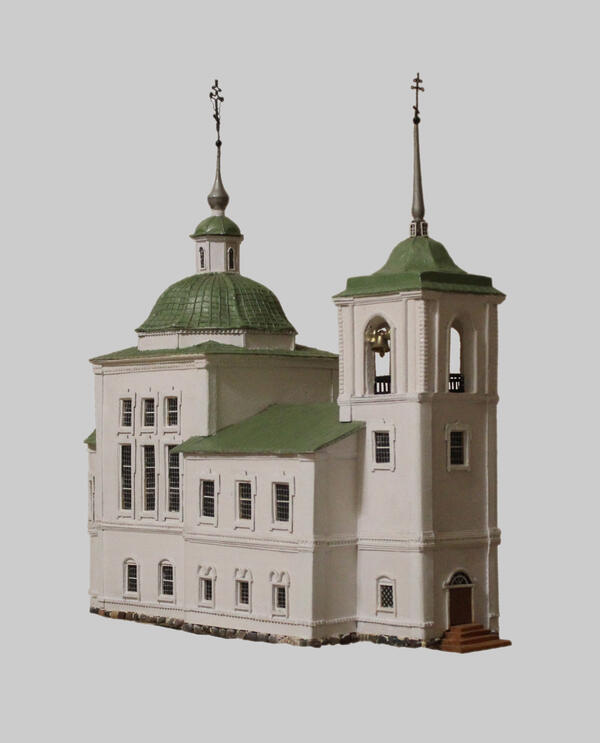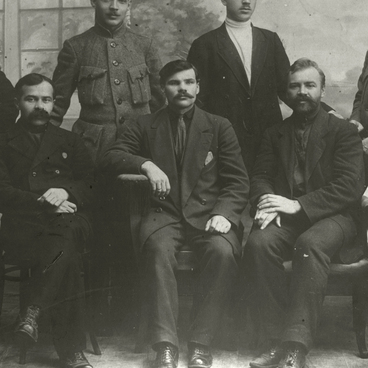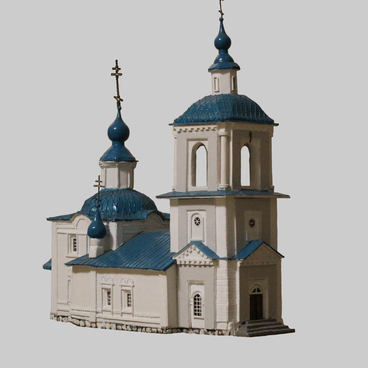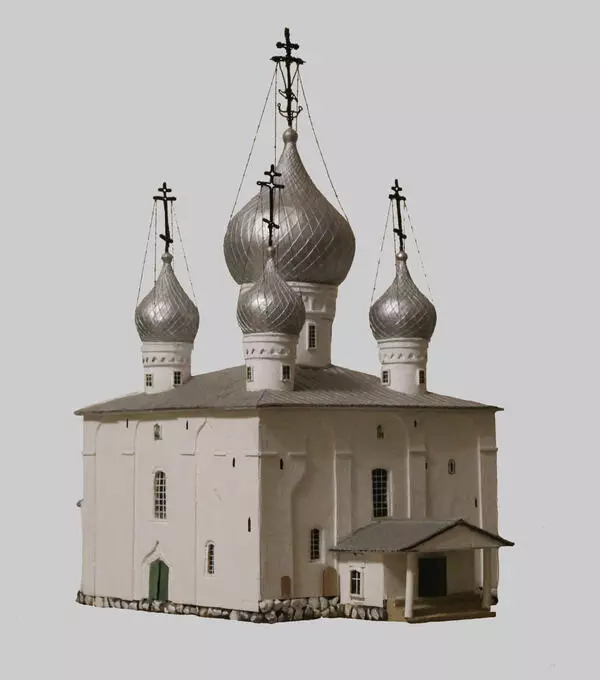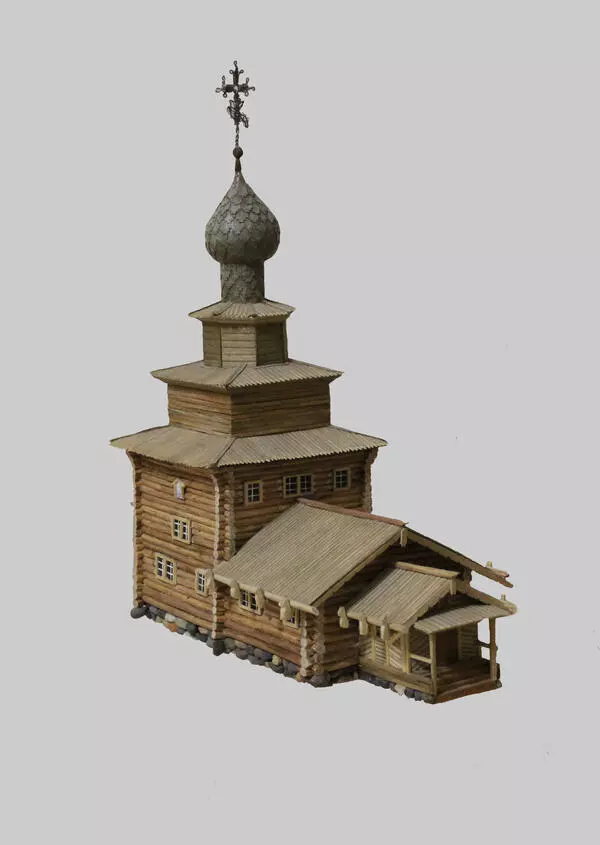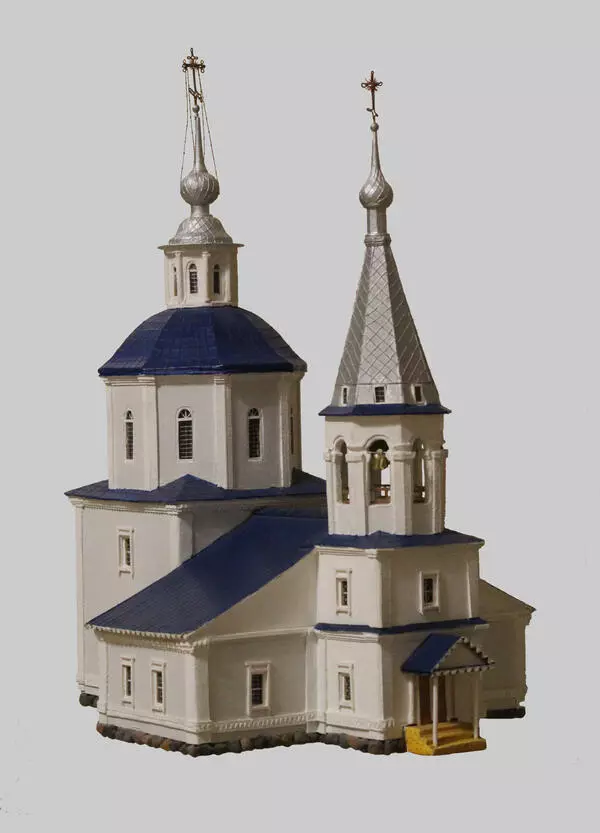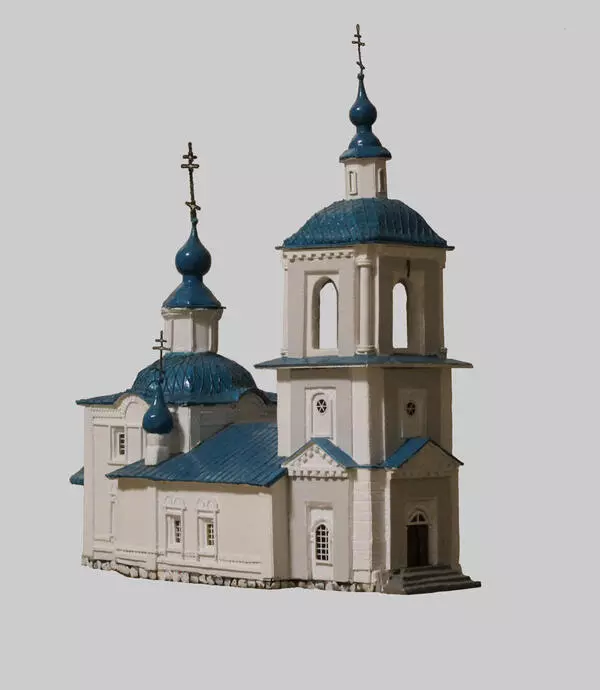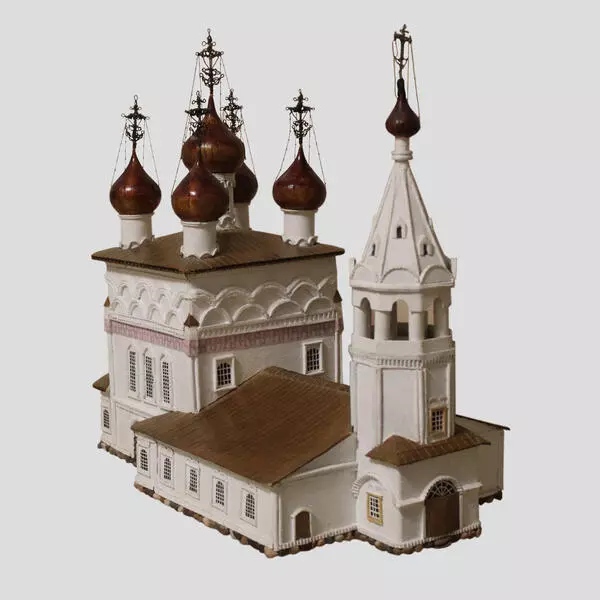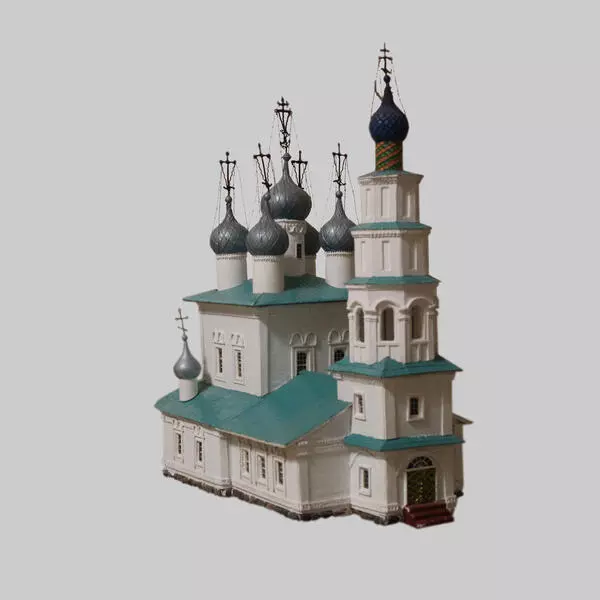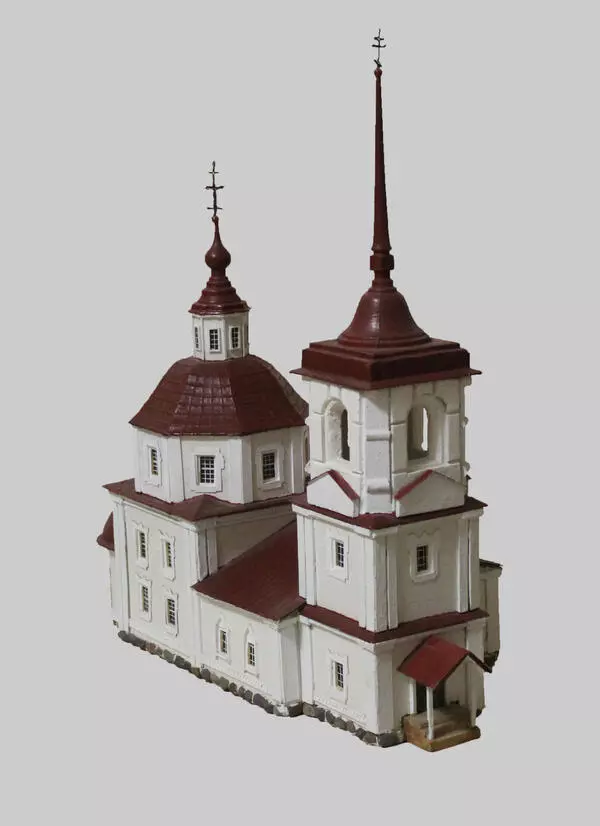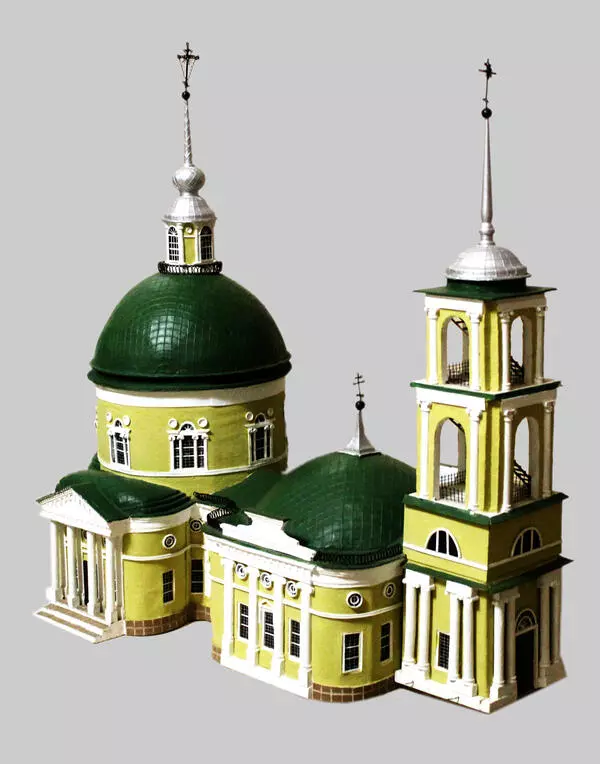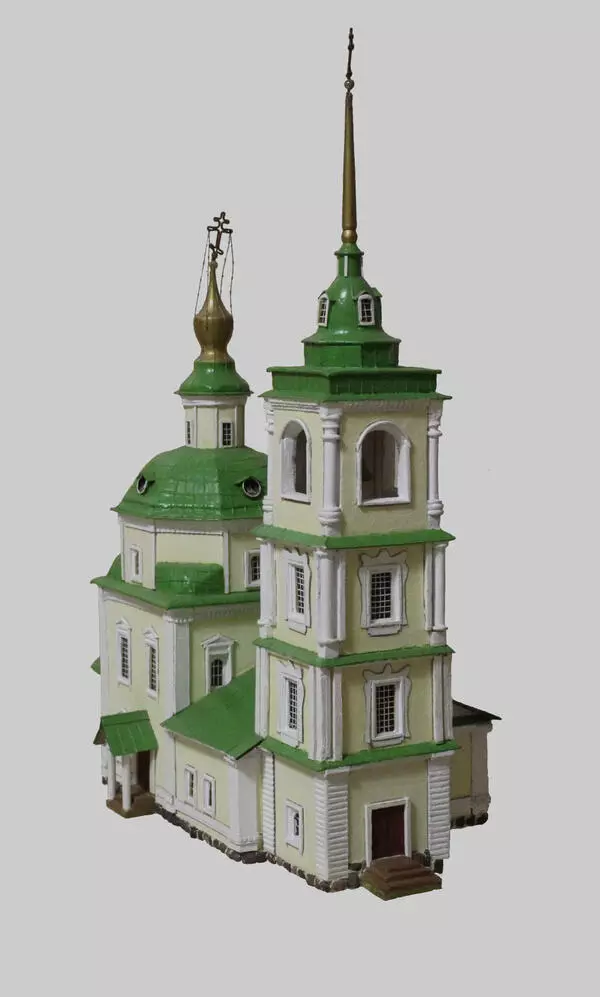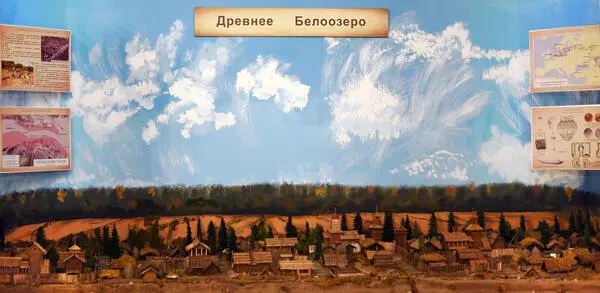References to the Church of the Ascension of Jesus Christ are found in the earliest description of the city - the Re-inventory book of the City of Belo-ozero of 1617/18. The temple with the chapel of Nicholas the Wonder Worker was cellular, that is, it consisted of several timber cribs, united by one roof. Iconostasis in the church was ‘tYAbloviy’. Icons in such iconostasis were attached to the grooves in the ‘tYAbla’, a special beam that was inserted in opposite sides of the temple. In the center, the tYAbla was wider, and a special icon composition, Deesis, was written on it. In the center of the Deesis Jesus Christ was depicted, and on his either side - the Virgin and John the Baptist.
An excerpt from the Belozersk cadastres of the 1670s also mentions the Church of the Ascension as one of the city’s temples. According to the cadastres, it was located on Voznesenskaya Street. There were four bells on the parvis weighing 4 poods or about 65 kilograms. The church was built with donations of the parishioners.
A two-storey church from bricks on top of the high lower floor – the basement - was erected in 1776. The main rectangular volume was covered by an octagonal dome vault and a roof with a miniature head and a spire. The light penetrated to the main hall through the tall windows on the northern and southern wall. On the eastern side of the temple there was a semi-circular perch, an apse in which the altar was found. From the west the temple was adjoined by a small refectory and a three-level bell tower. Below was the Nikolsky, heated, temple with the side-altars of Kirill Novoezersky and Alexander Svirsky, and above was the cold temple of the Ascension of the Lord. The cold temple was not heated, and the service here took place only during the warm season. The bell chamber was on the third tier there. The façade was decorated with cornices, sculptured cross-pieces. The corners of the bell tower and the temple were decorated with perches.
The church was located in the southeast of the city. Until the 19th century the church had its own parish, then it was attributed to the Assumption Church, and later to the church of Peter and Paul. In 1909, the church was photographed by Russian photographer and inventor Sergey Prokudin-Gorsky.
In the Soviet years, the church was closed and then demolished. A square was created on the site of the temple and a monument to the Hero of the Soviet Union Ivan Malozyomov was erected.
An excerpt from the Belozersk cadastres of the 1670s also mentions the Church of the Ascension as one of the city’s temples. According to the cadastres, it was located on Voznesenskaya Street. There were four bells on the parvis weighing 4 poods or about 65 kilograms. The church was built with donations of the parishioners.
A two-storey church from bricks on top of the high lower floor – the basement - was erected in 1776. The main rectangular volume was covered by an octagonal dome vault and a roof with a miniature head and a spire. The light penetrated to the main hall through the tall windows on the northern and southern wall. On the eastern side of the temple there was a semi-circular perch, an apse in which the altar was found. From the west the temple was adjoined by a small refectory and a three-level bell tower. Below was the Nikolsky, heated, temple with the side-altars of Kirill Novoezersky and Alexander Svirsky, and above was the cold temple of the Ascension of the Lord. The cold temple was not heated, and the service here took place only during the warm season. The bell chamber was on the third tier there. The façade was decorated with cornices, sculptured cross-pieces. The corners of the bell tower and the temple were decorated with perches.
The church was located in the southeast of the city. Until the 19th century the church had its own parish, then it was attributed to the Assumption Church, and later to the church of Peter and Paul. In 1909, the church was photographed by Russian photographer and inventor Sergey Prokudin-Gorsky.
In the Soviet years, the church was closed and then demolished. A square was created on the site of the temple and a monument to the Hero of the Soviet Union Ivan Malozyomov was erected.

